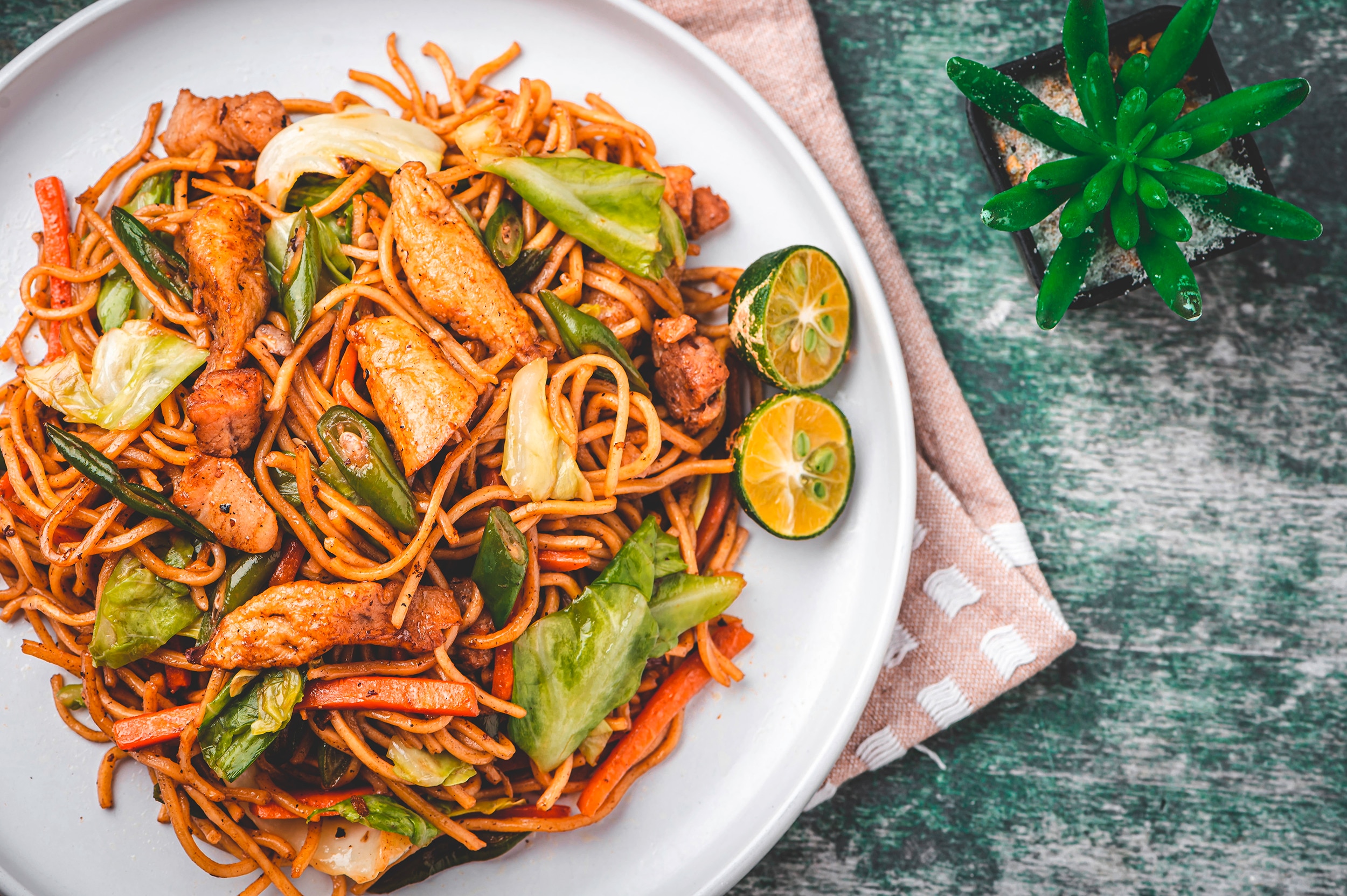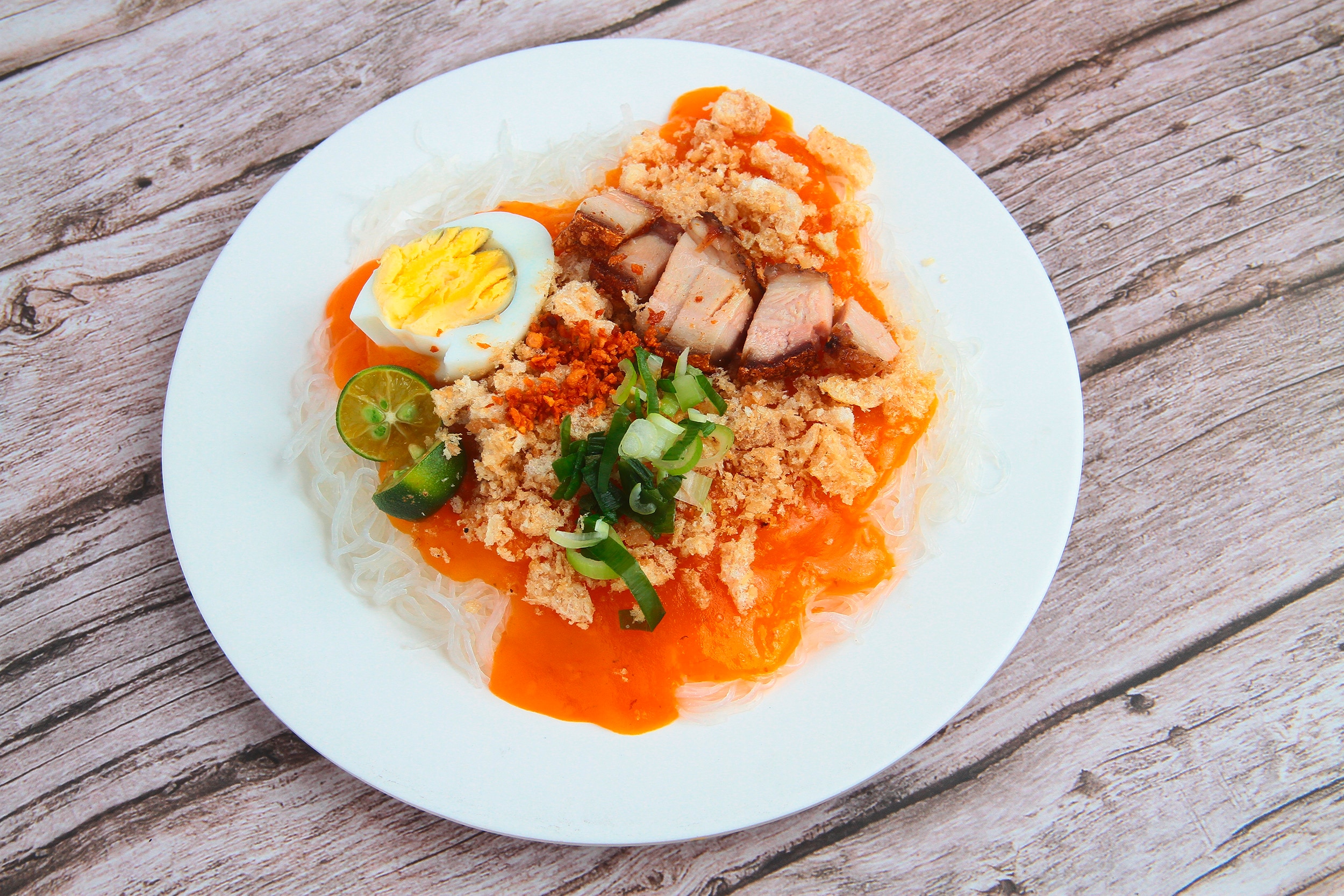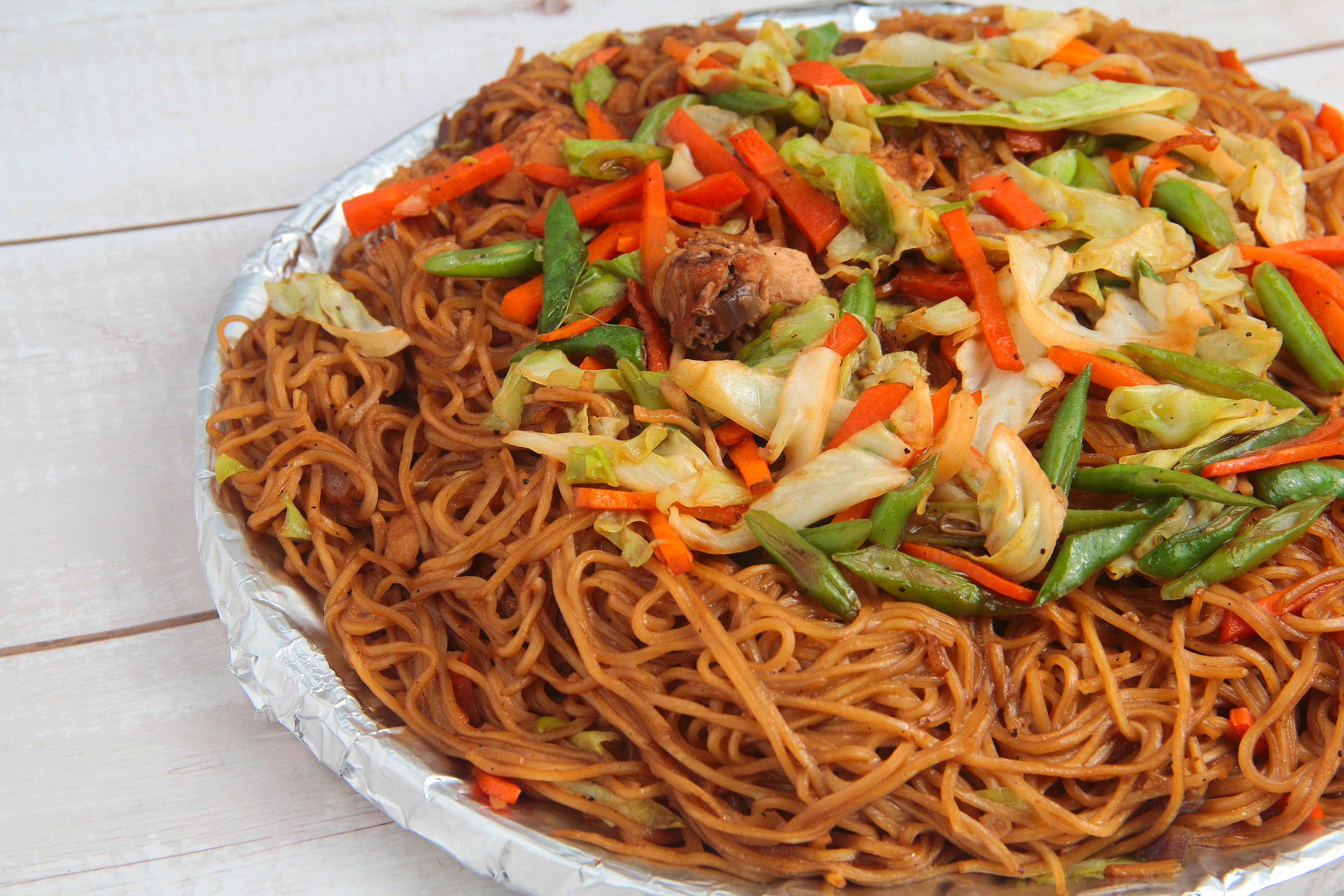Skip to:
Fun fact: noodles were first introduced to Philippine cuisine through Chinese merchants. Over the decades, these noodle dishes evolved to fit the Filipino palette using our own native ingredients. When noodle restaurants eventually popped up in the country, they came to be known as panciterias—a name influenced by our Spanish colonization. Today, pancit to Filipinos is like pasta to Italians: ubiquitous, comforting, and needs no occasion.
Like pasta, pancit comes in tons of different varieties. Many regions in the Philippines have their spin on it, with textures, flavors, and cooking styles varying per area. Each one is an expression of that locale’s native cuisine. To whet your appetite for this national dish, here are eight types of pancit worth adding to your next food trip.

1. Pancit Canton
Pancit canton is well-loved for its tasty seasonings and satisfying bite. Not much is known about its origins—despite what the name suggests, it has no connection to Canton, China. To make it, start by stir-frying wheat noodles with soy sauce and ginger. Top it off with a generous helping of blanched snap peas, cabbage, carrots, plus sliced shrimp, chicken, sausage, and quail eggs. For extra umami, add a spoonful of toyomansi for just the right amount of salt and acid.
2. Pancit Malabon
Pancit Malabon is a traditional dish from Malabon, Manila, a coastal region known for its fresh seafood. Their spin on pancit spotlights seafood ingredients in every layer. For its base, thick rice-flour noodles are doused in a tasty sauce made of shrimp juice, fish sauce (or patis), and annatto seeds for red coloring. Then, it’s topped off with a flurry of seafood ingredients: dried fish flakes, shrimps, mussels, squid, and cracklings. It also commonly includes sliced cabbage, hard-boiled eggs, and pork chicharon cracklings.
3. Pancit Bato (Pancit Bicol)
Bearing a close resemblance to pancit canton, pancit Bato is a Bicolano dish from the municipality of Bato, Camarines Sur. It offers a smokier taste and thicker noodles, which are typically sundried. Prepare it by boiling noodles and stir-frying them in garlic and onions. Its toppings are similar to pancit canton: shrimp, carrots, bok choy, and snap peas, all seasoned with salt and pepper.
For meat, it often includes sauteéd pork simmered in chicken stock until soft. You can make chicken stock by dissolving a Knorr Pork Cube in 450ml of boiling water. In some varieties, fish sauce or patis is also used to flavor the noodles.
4. Pancit Batil Patong
Next up is the Cagayan dish from Tuguegarao City called pancit batil patong. The name is a mouthful, but so is the dish! Pancit batil patog looks similar to an egg drop soup, with egg noodles, toppings, and a sauce as its three main components. Its sahog comprises ground beef, chopped pork liver, scallions, cabbage, and mung bean sprouts (togue) seasoned with soy sauce, black pepper, and oil. The sauce is a blend of eggs, onions, celery, and carrots cooked in beef stock.
Pour over the noodles with toppings upon serving. The finishing touch? A fried egg on top and sliced calamansi wedges on the side for an acid kick.
5. Pancit Habhab
Originating from the town of Lucban in Quezon province, pancit habhab uses miki noodles. This noodle is softer than most and gives this dish a comforting feel. It’s typically topped with pork parts—namely belly and liver. For vegetables, it combines sayote, carrots, pechay or bok choy, along with a soy sauce-based seasoning. To eat it the traditional way, serve pancit habhab on banana leaves and dig in with your hands!
6. Pancit Langlang
A noodle dish that also employs miki noodles, pancit langlang comes from the town of Imus, Cavite. It's so well-loved that it was referred to as “the soup par excellence!” in one of Jose Rizal’s fictional works. Made with a heart-warming mix of miki noodles, onions, crunchy chicharon, and shredded adobo meat doused in a flavorful broth, this pancit is ideal for a sick or rainy day.

7. Pancit Palabok
Pancit palabok can be found everywhere, from fast food restaurants to your roadside karinderya. Its winning feature? The rich, shrimp-infused sauce gives this dish its characteristic orange color. Traditionally, it comprises thin, translucent rice noodles garnished with hard-boiled eggs, scallions, shrimp, fish flakes, pork slices, and a heaping spoon of crushed chicharon bits. Filipinos often serve it as breakfast, merienda, and festive food. There’s no wrong time to enjoy a plate of creamy pancit palabok.
8. Pancit Lomi
Chinese-Filipino restaurateur To Kim Eng invented pancit lomi in 1968 inLipa, Batangas. It features thick egg noodles swimming in a thick, golden broth. The toppings lean heavily on protein – chicken, kikiam, meatballs, ham, crushed chicharon, and hard-boiled eggs – with only scallions and onions as garnish. With everything combined, you get an ultra-filling bowl of noodle soup perfect as a mid-road trip meal.
Pancit is one of the many foods that reflect the uniqueness of Philippine cooking, as well as the commonalities that run through our many native cuisines. Which of these eight pancit noodles will you be trying next?

